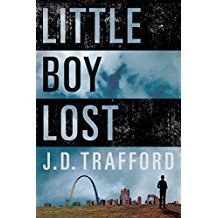
[Explanation of Reading Journal Entries/Ratings]
Post 2
Ira Levin’s first novel, published in 1953. I read a 2011 British Edition with a great introduction by Chelsea Cain that’s smart enough not to spoil anything.
5 out of 5 stars.
The Plot:
A college student doesn’t want to marry his pregnant girlfriend. But he’d still like a piece of her inheritance…
Spoiler warnings usually don’t apply to sixty-four-year-old books but, unlike Levin’s Rosemary’s Baby (another 5-star review) and The Stepford Wives, the twists in this one aren’t in the modern public zeitgeist. It’s still possible to go into A Kiss Before Dying blind.
So don’t look it up, don’t poke around on Goodreads or Wikipedia. Don’t read any more of this review. Just find a copy. It has Levin’s usual wicked and clever touches without being gratuitous; his plots are puzzle-boxes, not voyeuristic meditations on gore or pain.
[1] Levin takes a long time to give us the main character’s name. Through Part One, he is simply “He.” Even after the identity is revealed, Levin still uses He/Him (unless two males are in the same scene and it would simply be confusing). This builds the mystery but also keeps the character a detached, inhuman figure; more dangerous because of his animalistic blankness. It never feels like a gimmick, either; it took me thirty pages to even notice that the main character had not been given a name yet.
[2] Reference:
He was born in Manasset, on the outskirts of Fall River, Massachusetts.
(p.8)
There is no Manasset, Massachusetts but knowing Levin (Rosemary’s Baby note [1]), I’m going to read into all of his naming choices.
Having Burton Corliss come from a place called Manasset seems fitting for a sociopath who sees others as pawns to help or hinder his plans. (Also, Fall River’s most famous resident is accused ax-murderer Lizzie Borden. I refuse to believe Levin didn’t think of this going in.)
Burton is known to everyone as “Bud” (faint shades of Rosemary‘s Guy Woodhouse), showing the friendly, disarming mask this terrible man wears around others.
The rich, powerful father of Bud’s victims is pointedly named Leo Kingship. So, I have to ask, is there any significance to the three Kingship sisters being named Dorothy, Ellen and Marion? (Remembering that we’re speaking of significance pre-1953.)
The most famous Dorothy is probably Dorothy Gale from the Oz books.
Dorothy Arnold (1886 – disappeared 1910) was a New York City socialite and heiress who disappeared while walking on Fifth Avenue in New York City in December 1910.
I came up with nothing when looking through famous Ellens on Wikipedia.
Marion is a somewhat unusual name; I have to wonder if Robert Bloch was giving a nod to Levin with Marion Crane in Psycho (1959). There is Maid Marian from the Robin Hood tales, but the name is spelled differently. Marion Davies (1897 – 1961) was William Randolph Hearst’s mistress (and influenced a character Citizen Kane), but I’m going down a completely speculative rabbit-hole.
If anyone has theories on this, I’d love to hear them.
[3]
The only study to which he applied himself was diction; he had been dismayed to hear the word “accent” used in relation to himself, having always thought of it as something someone else had.
(p.13)
[4] Reference:
Pawning a Patek Philippe wristwatch.
(p.14)
Patek Philippe & Co. is a Swiss watch manufacturer founded in 1851. It is considered by many experts and aficionados to be one of the most prestigious watch brands.
[5] References:
He finally chose Stoddard University in Blue River, Iowa.
(p.14)
Stoddard University and Blue River, Iowa were invented for this novel.
According to Wikipedia, Levin attended Drake University in Des Moines, Iowa for two years before transferring to New York University (which is similar to the path of A Kiss Before Dying’s Dwight Powell).
Drake University, with a current student body of around 5,000, is about half the size of the fictional Stoddard University.
[6]
Two weeks later, when he was reading Rebecca and pretending to love it because it was Dorothy’s favorite book, and when she was doggedly knitting him bulky argyle socks because a previous boyfriend had liked them and so the knitting of them had become the badge of her devotion, the pamphlets arrived.
(p.17)
[7] Reference:
“Have you read Marquand’s new novel?”
(p.18)
John P. Marquand (1893 – 1960) was an American writer. Originally best known for his Mr. Moto spy stories, he achieved popular success and critical respect for his satirical novels, winning a Pulitzer Prize for The Late George Apley in 1938. One of his abiding themes was the confining nature of life in America’s upper class and among those who aspired to join it.
This line is from a letter in April of 1950. Marquand published two books in 1949: It’s Loaded, Mr. Bauer, a crime novel and Point of No Return, a literary novel whose lead character is from a small Massachusetts town.
[8] References:
Ellen entered Caldwell College, in Caldwell, Wisconsin.
(p.19)
There is a Caldwell University in New Jersey, but no Caldwell College in Wisconsin.
Caldwell, Wisconsin is an unincorporated community in the town of Waterford, Wisconsin.
[9] Reference:
“I’m going to get us a reservation at the New Washington House-”
(p.23)
Does not exist in Iowa.
[10]
While in this state of labored concentration he unconsciously dropped the pretense of being undecided as to whether or not he would actually go through with his plans: he was going to kill her (…) At times during the day, when a loud voice or the chalk’s screech made him momentarily aware of his surroundings, he looked at his classmates with mild surprise. Seeing their brows contracted over a stanza in Browning or a sentence in Kant, he felt as though he had suddenly come upon a group of adults playing hop-scotch.
(p.35)
[11] Reference:
He paused at the button opposite “Some Enchanted Evening”, which was one of Dorothy’s favorites.
(p.37)
“Some Enchanted Evening” is a show tune from the 1949 Rodgers and Hammerstein musical South Pacific.
[12] Reference:
The Spanish novel, La Casa de Las Flores Negras, was balanced on his knee.
(p.40)
Spanish: The house of black flowers
I can’t find a book with this title.
[13] Did mail move this fast in the early fifties?
The first mail collection of the morning was at six; Caldwell was only a hundred miles away and so the letter would be delivered this afternoon.
(p.50)
According to The United States Postal Service : An American History 1775 – 2006:
[Mail carriers] were instructed to deliver letters frequently and promptly – generally twice a day to homes and up to four times a day to businesses. The second residential delivery was discontinued on April 17, 1950, in most cities.
(USPS p.21)
Huh. I guess mail could really move back then.
[14]
There were times, he realized, when being so handsome was a definite handicap.
(p.60)
[15] Reference:
The lower eight floors of the Blue River Municipal Building were given over to the offices of the city and of Rockwell County, of which Blue River was the county seat.
(p.62)
There is a Rockwell City in Iowa, which is the county seat of Calhoun County, but no Rockwell County.
[16] Reference:
It was a monstrosity, but on alighting from the tramcar Dorothy turned, paused, and gazed up at it as though it were the cathedral at Chartres.
(p.62)
Chartres Cathedral, also known as the Cathedral of Our Lady of Chartres, is a Gothic Catholic cathedral of the Latin Church located in Chartres, France.
It really is stunning.
[17] Odd word use:
They would push her over and then a breeze or the force of the movement might send their hat sailing down to land beside her body. Barn!
(p.66)
I cannot find a definition of “barn” as slang like this. Could it be a typo for “Darn”?
[18] Reference:
On the right, the KBRI tower reared up like a smaller Eiffel.
(p.67)
KBRI (104.1 FM) is licensed to serve Clarendon, Arkansas.
KBRI (1570 AM; defunct) was formerly licensed to serve Brinkley, Arkansas.
Neither of which add up to the KBRI Levin is referencing.
[19] Vocabulary:
A gentle wind strumming the cables that guyed the radio tower.
(p.68)
guy
verb – secure with a line or lines.
[20]
“She laughed a lot and was smiling the whole time she was in my room. And she kept moving around. I thought at the time that she was very happy about something, but now I realize that those were all symptoms of the terrible nervous strain she was under. Her laughs were tense laughs, not happy ones. I should have recognized that right away, being a psychology major.”
(p.79 – 80)
Levin hadn’t quite mastered the satire he’d use in later works (I’ll give the kid a break; he was in his early twenties), but he’s working on it. The young woman speaking in this section has convinced herself that her initial (correct) assumptions were incorrect and now sees “signs” that simply weren’t there. I love it. Levin knows people do this all the damn time.
[21]
He had anticipated more campus conversations and newspaper articles, allowing him the luxuriant superiority of the omniscient.
(p.81)
[22] References:
Pearson’s Studies in Murder, Bolitho’s Murder for Profit, volumes in the Regional Murder Series. He read about Landru, Smith, Pritchard, Crippen; men who had failed where he had succeeded.
(p.83)
Edmund Lester Pearson (1880 – 1937) was an American librarian and author. He was a writer of true crime. In 1924, he published his best known work, Studies in Murder, which included an essay on Lizzie Borden (note [2]).
William Bolitho Ryall (1891 – 1930) was a South African journalist, writer and biographer who was a valued friend of prominent writers such as Ernest Hemingway and Noel Coward. His book Murder for Profit was published in 1926. The book’s description on Goodreads:
This is not exactly a police procedural, but is a good example of the early true-crime account. Bolitho summarizes the careers of six real murderers, who slew for money, including Burke and Hare and Landru, the French “Bluebeard.”
The Regional Murder Series were literally just that: reference books of murders in major cities. I found volumes for Boston (1948), Los Angeles (1947), San Francisco (1947), Chicaco (1945), and Detroit (19??), but no real information about the history of the series.
Henri Desire Landru (1869 – 1922) was a French serial killer. Between 1914 and 1919, Landry killed ten women and a teenage male. He was guillotined in Versailles and what is purported to be his head is in the Museum of Death in Los Angeles.
George Joseph Smith (1872 – 1915) was an English serial killer and bigamist. In 1915 he was convicted and hanged for the slayings of three women, the case becoming known as the “Brides in the Bath Murders.”
Edward William Prichard (1825 – 1865) was an English doctor who was convicted of murdering his wife and mother-in-law by poisoning them. He was also suspected of murdering a servant girl, but was never tried for this crime. He was the last person to be publicly executed in Glasgow.
Hawley Harvey Crippen (1862 – 1910), usually known as Dr. Crippen, was an American homeopath, ear and eye specialist and medicine dispenser. He was hanged for the murder of his wife.
[23] Vocabulary:
A broad field of meticulously accoutered desktop.
(p.97)
accoutre
verb – clothe or equip, typically in something noticeable or impressive.
[24] Vocabulary:
The ponderous notes of the noon-day carillon floated into chamber.
(p.97)
noun – a set of bells in a tower, played using a keyboard or by an automatic mechanism similar to a piano roll.
a tune played on a carillon.
[25]
The Dean leaned forward, his fingers softly clustered on the desk.
(p.99)
[26] References:
“You ever read the Saint stories? I used to. Old Simon Templar was always running into beautiful women with strange behavior patterns. One of them swam on to his yacht in the middle of the night. Said she was a channel swimmer gone astray, I believe. Turned out to be an insurance investigator.”
(p.115)
Simon Templar is a fictional character known as The Saint. He featured in a long-running series of books by Leslie Charteris published between 1928 and 1963.
Saint Overboard is the title of a 1936 novel starring Simon Templar. In it, Templar is enjoying a pleasure cruise along the French coast when he is awakened in the middle of the night by the sound of gunfire. The shooters are pursuing a young woman who swims up to Templar’s yacht and identifies herself as a private detective.
[27]
Better to live in doubt than to die in certainty.
(p.116)
[28]
She watched his face in the mirror. He glanced up and smiled again. She returned the smile faintly; I am not interested, but I am not completely un-interested.
(p.125)
[29] Reference:
“There’s a very good revival at the Paramount tonight. Lost Horizon. You want to see it?”
(p.127)
Lost Horizon is a 1937 drama-fantasy film directed by Frank Capra based on the 1933 novel of the same name by James Hilton.
Post 2
Advertisements Share this:





